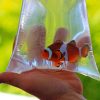
As a beginner level fish tank owner, people are always looking for fish that are not very demanding. Live Bearer fish therefore make a great choice. Another reason why people prefer live bearer fish is because they don’t lay eggs. Instead, they give birth to live fish babies. As a result, the tank owner does not have to look out for eggs and wait for them to hatch.
In a nutshell, live bearer fish are a lot easier to care for and breed as compared to the ones that lay eggs. If you are someone who is maintaining and setting up a tank for the first time or are comparatively new to fish breeding, you can always choose live bearer fish and make things easier for yourself. Another plus point is the fact that they are easily available and can be found at almost all leading fish stores like petfish.com.au.
Guppies:
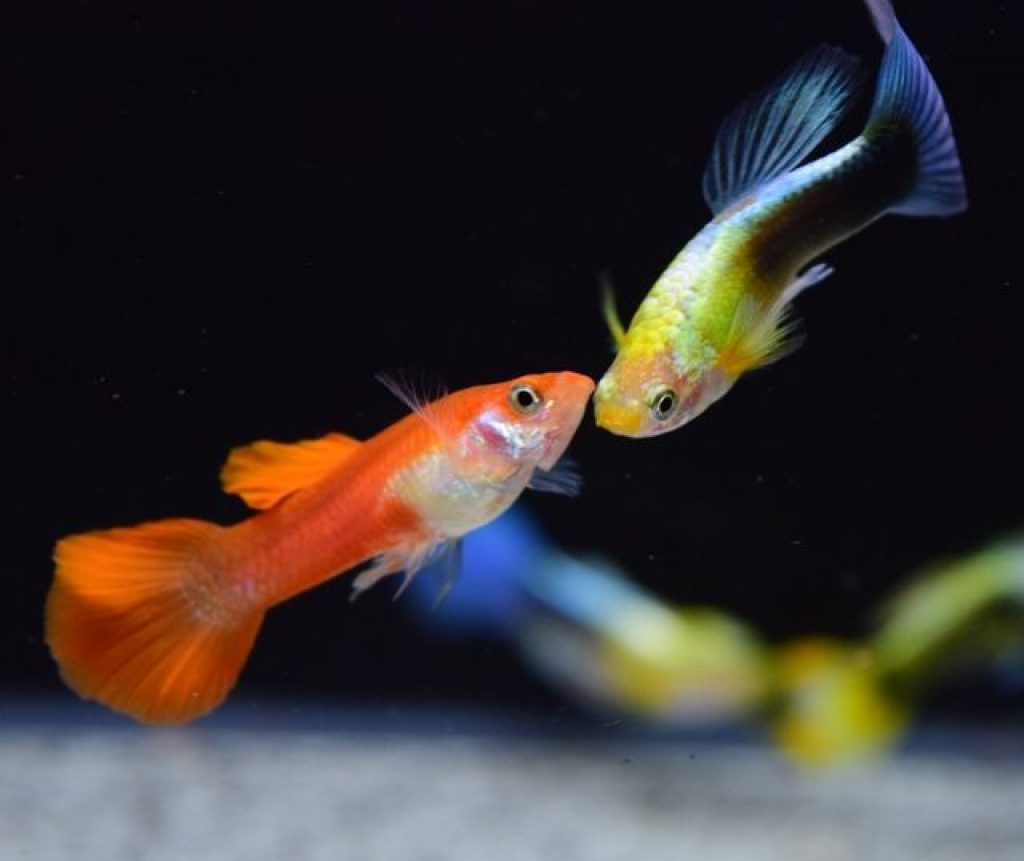
Guppies are undoubtedly one of the most commonly available live bearer fish. Hailing from the South American region, these fish are easy to care for and any beginner can opt for them without any issue. They have a peaceful temperament and come in a wide range of colors.
You can find guppies in almost all colors imaginable. They have distinct patterns covering their bodies that can range from spots to stripes. The male guppy fish are smaller in size as compared to the female ones. The males have a tendency to reach a size of around 0.6-1.4 inches whereas the females can grow up to a length of 1.2-2.4 inches.
As mentioned earlier, Guppies are very easy to breed. They can take care of the breeding themselves and require little to no help from the tank owner. The gestation period of guppy fish is around twenty one to thirty days. Breeding begins when the male fish identify the virgin fish from the females that are already pregnant. After identification, the male passes a pack of sperms to the female fish which is then used to fertilize the eggs. The babies stay in the eggs inside the mother fish’s body and are released after the completion of the gestation period.
At times, the female guppy fish tends to eat its fry. Therefore, keep an eye on the fish. Some people separate the mother and the fry whereas other tank owners make use of a breeding trap. After the completion of the first set of breeding, the female fish will start working for the next set of pregnancy almost immediately. Therefore, bear in mind that the guppy fish will reproduce and multiply in number at a rapid rate.
When preparing a tank for Guppy breeding, make sure that the bottom of the tank is bare. Adding free floating plants like Java Moss is also highly recommended. These plants serve as a safety net for the fry and help them hide away from predators.
Mollies:
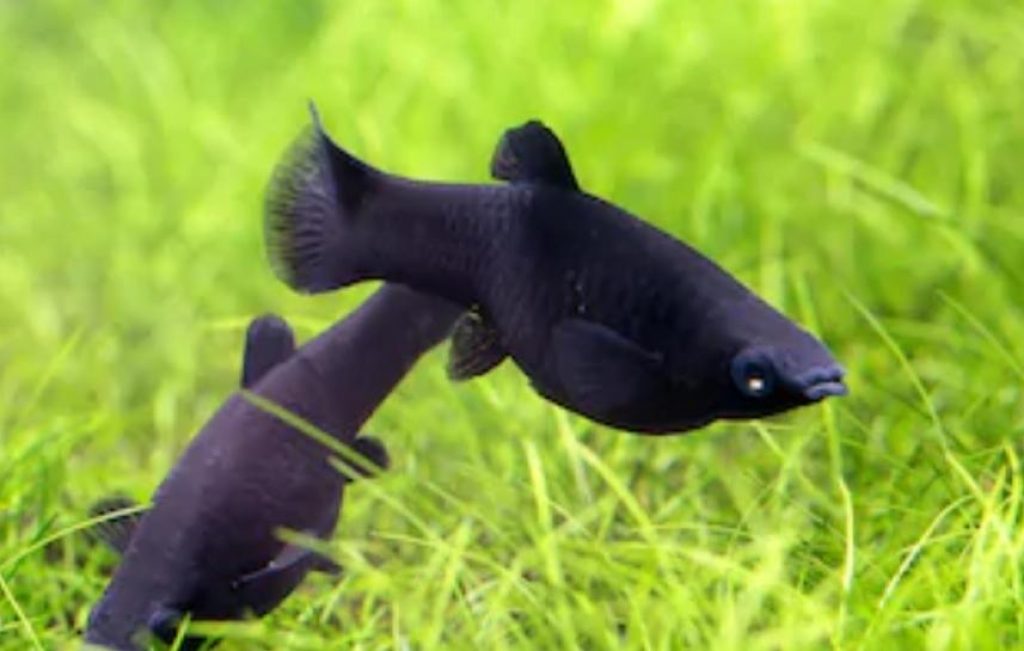
The jet-black colored fish that you come across in almost all community aquarium tanks is none other than the Molly fish. Although the fish can come in a wide range of colors, the black variation seems to be immensely popular and loved.
If cared for properly, it can easily live up to five years of age. They are considerably smaller in size reaching a length of around four point five inches at max. Mollies are so popular amongst aquarium tank owners that is rare for one to find a pet store or a fish store that does not stock them!
Mollies can differ not only in terms of colors and patterns but they range in sizes as well. The Black Molly Fish, Sailfin Molly and Lyretail Molly are the most popular Molly variations. Molly fish tend to breed on a regular basis therefore, be aware of the fact that you will see them increase in number at a rapid rate.
When planning to initiate mating amongst the fish, make sure to provide the ideal tank conditions. The first step in this regard is to raise the temperature of the tank up to a limit of seventy eight degrees Fahrenheit. Females mostly try to mate with males that are larger in size. Once the sperm has been handed over to the female fish and the eggs have been fertilized, the gestation period can last from thirty five to forty five days.
Like Guppies, Mollies too tend to eat the fry. The best option therefore is to invest in a breeding trap. Breeding trap has small holes that prevent the adults from coming out yet allow the small babies to move around. The fry can be fed flake based food till it grows in size and once stabilized, can be kept back with the adult fish.
Swordtail Fish:
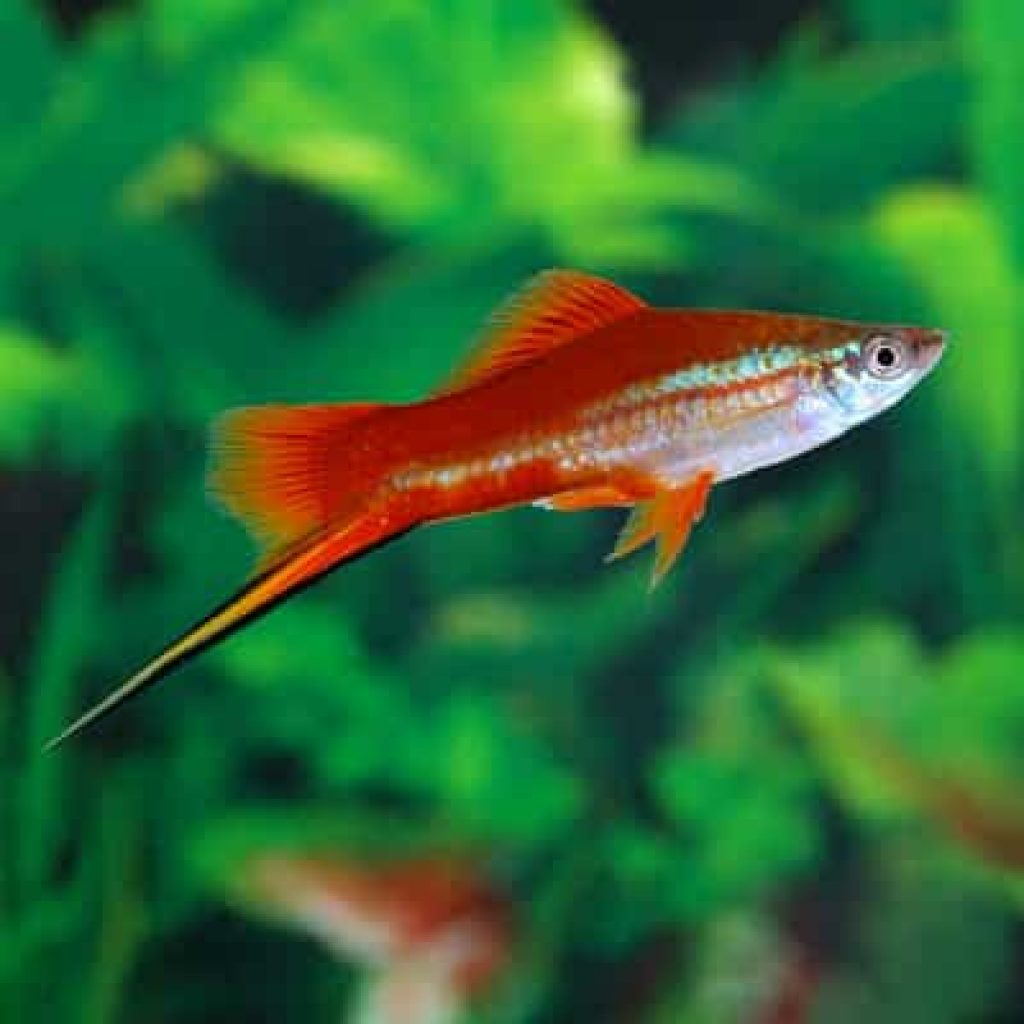
The swordtail fish get their name due to the shape of their tails. As indicated by the name itself, they have tails that are shaped like swords. Due to the fact that they are easy to keep and breed, they are highly recommended for almost all beginner level tank owners.
These fish are not temperamental at all and are very peaceful in nature. Therefore, tank owners can opt to keep them in specie as well as community tanks. When keeping them in a group, make sure that there is a ration of four to one between the female and male swordtail fish. They are mostly found roaming around the middle and upper part of the tank and rarely ever move to the bottom of the tank.
When planning to breed the swordtail fish, the first and foremost step is to be able to distinguish between the male and the female sexes. The male swordtail fish have an elongated lobe on the tails whereas the females lack this characteristic. In order to encourage and promote breathing, the tank temperature should be increased till it reaches around eight to eighty two degrees Fahrenheit. Make sure that their diet is rich in proteins and the tank is cleaned properly to ensure sanitary conditions.
The males nip the females to exhibit that they are ready to mate. After the fertilization of the eggs, the female swordfish’s belly starts swelling up. As soon as the fry are released, make sure that they are separated from the parents. The larger fish tend to prey on the fry and eat them. The fry are very small and should be fed special food that is meant for them or pellets that have been crushed into a smaller size.
Platies:
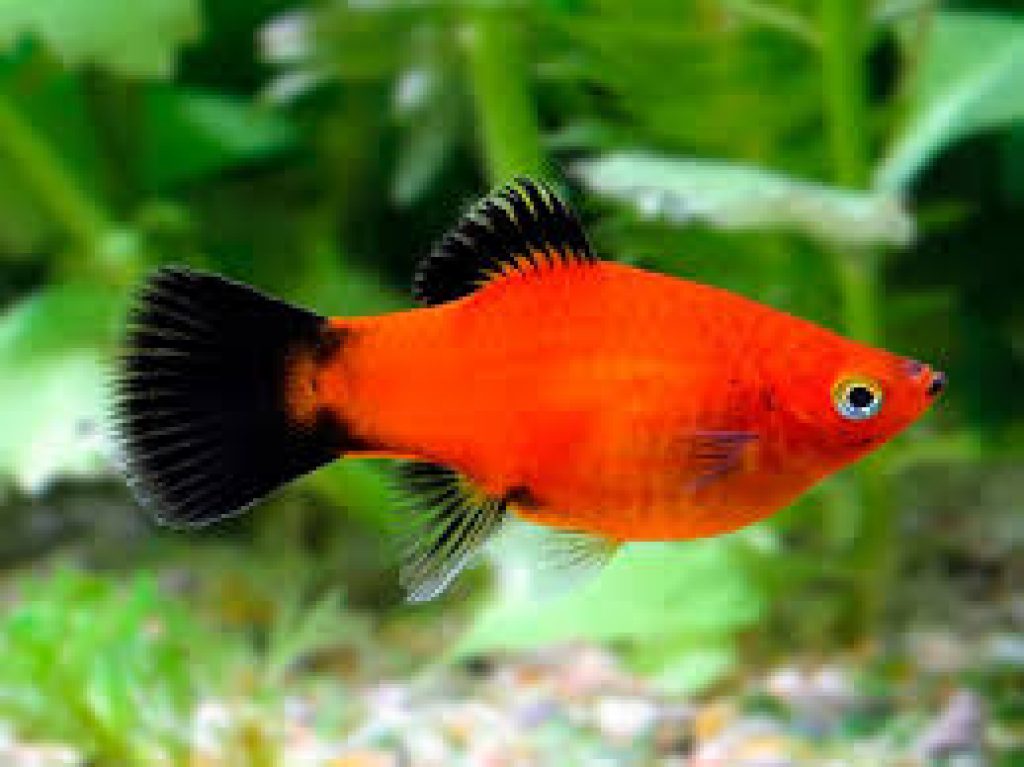
If you are looking for a small sized attractive fish that is easy to keep and breed, platies should surely be considered. With a size of around one point five inches for male platies and two point five inches for female fish. They come from both the central as well northern American region and can easily be found at petfish.com.au.
Despite their small size, these fish are extremely active. Therefore, they do need a tank that is spacious and gives them space to roam around freely. Although they are very tolerant of changing water conditions and temperature, it is recommended that tank owners maintain a water temperature between seventy to seventy seven degrees Fahrenheit so any sort of stress can be avoided.
Since platies are live bearing fish, they breed pretty easily and don’t require much attention and effort from the tank owners. They breed frequently therefore the tank owners should be ready to deal with fry and a rapid rate of increase in their population.
The female acquires the sperm from the male platy fish and nurtures the babies inside her body. The pregnant female can easily be identified due to her swollen belly and a dark spot that appears close to their anal fin. After the gestation period, the fry are released from the mother’s body into the tank.
The fry are also very active therefore it is common for one to see them freely swimming around in search of food to feed themselves. However, they are at a risk of being preyed upon by other stronger fish in the tank. Sometimes, the parents can also eat their own fry. Therefore, it is highly recommended that either some plants are added to the tank. This way the babies can hide and protect themselves. Or you remove the fry from the tank till they become stronger and grow in size.
Conclusion:
Live Bearer fish are a great choice for any beginner level tank keeper. This category of fish is not only extremely easy to care for, but can be conveniently bred as well. Simply make sure that you maintain proper tank conditions and you will be seeing fry swimming around in your tank within no time. However, be aware of the fact that most of the live bearer fish reproduce at a rapid rate. Place them in a larger tank and be prepared to deal with their growing number. Otherwise, you will be facing overpopulation issues inside the tank.

